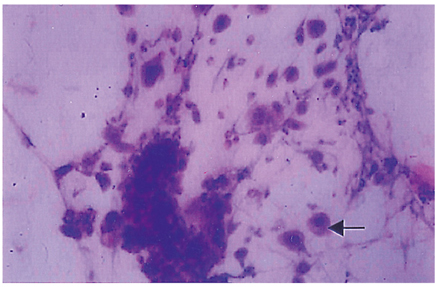Korean J Ophthalmol.
2005 Jun;19(2):128-131. 10.3341/kjo.2005.19.2.128.
Decompression Retinopathy after Trabeculectomy
- Affiliations
-
- 1Department of Ophthalmology, College of Medicine, Pusan National University, Pusan, Korea. jea-sy@hanmail.net
- KMID: 754410
- DOI: http://doi.org/10.3341/kjo.2005.19.2.128
Abstract
- PURPOSE
To present a case of a unilateral diffuse retinal hemorrhage in a 15-year-old girl, who underwent bilateral trabeculectomy for steroid induced glaucoma. METHODS: Despite the maximally tolerable medical treatment, IOP in the right eye remained above 50 mmHg for four months, and was simultaneously elevated in the left eye. So we performed bilateral trabeculectomy. RESULTS: On the first postoperative day, diffuse retinal hemorrhages were observed in the right eye; however, no retinal hemorrhage was found in the left eye. The hemorrhages resolved completely without consequences two months later. CONCLUSIONS: In the case of high IOP for a long period, sudden lowering of IOP may acutely increase the blood flow and consequently rupture multiple retinal capillaries because of altered autoregulatory function. Special care is therefore needed to prevent an abrupt fall in IOP before, during, and after surgery, especially when IOP has been highly elevated for an extended period.
Keyword
MeSH Terms
Figure
Cited by 1 articles
-
A Case of Decompression Retinopathy After Resolution of Acute Primary Angle-Closure Glaucoma
Joo Hoon Kim, Jang Won Huh
J Korean Ophthalmol Soc. 2009;50(5):785-789. doi: 10.3341/jkos.2009.50.5.785.
Reference
-
1. Givens K, Shields MB. Suprachoroidal hemorrhages after glaucoma filtering surgery. Am J Ophthalmol. 1987. 103:689–694.2. Cantor LB, Katz LJ, Spaeth GL. Complications of surgery in glaucoma. Suprachoroidal expulsive hemorrhage in glaucoma patients undergoing intraocular surgery. Ophthalmology. 1985. 92:1266–1270.3. Tuli SS, WuDunn D, Ciulla TA, et al. Delayed suprachoroidal hemorrhage after glaucoma filtration procedures. Ophthalmology. 2001. 108:1808–1811.4. Howe LJ, Bloom P. Delayed suprachoroidal haemorrhage following trabeculectomy bleb needling. Br J Ophthalmol. 1999. 83:757.5. The Fluorouracil Filtering Surgery Study Group. Risk factors for suprachoroidal hemorrhage after filtering surgery. Am J Ophthalmol. 1992. 113:501–507.6. Canning CR, Lavin M, McCartney AC, et al. Delayed suprachoroidal haemorrhage after glaucoma operations. Eye. 1989. 3:327–331.7. Ariano ML, Ball SF. Delayed nonexpulsive suprachoroidal hemorrhage after trabeculectomy. Ophthalmic Surg. 1987. 18:661–666.8. Duane TD, Osher RH, Green WR. White centered hemorrhage: their significance. Ophthalmology. 1980. 87:66–69.9. Kapoor S, Schiffman J, Tang R, et al. The significance of white-centered retinal hemorrhages in the shaken baby syndrome. Pediatr Emerg Care. 1997. 13:183–185.10. Capoor S, Goble RR, Wheatley T, et al. White-centered retinal hemorrhages as an early sign of preeclampsia. Am J Ophthalmol. 1995. 119:804–806.11. Von Barsewisch B. Perinatal Retinal Hemorrhages. 1979. New York: Springer-Verlag;48–52.12. Neitzke R, Spraul CW, Lang GE. Bilateral retinal hemorrhages with a white leukemia. Ophthalmologe. 2001. 98:1198–1199.13. Ling R, James B. White-centered retinal haemorrhages (Roth spots). Postgrad Med J. 1998. 74:581–582.14. Sagaties MJ, Raviola G, Schaeffer S, et al. The structural basis of the inner blood-retina barrier in the eye of Macaca mulatta. Invest Ophthalmol Vis Sci. 1987. 28:2000–2014.15. Dudley DF, Leen MM, Kinyoun JL, et al. Retinal hemorrhages associated with ocular decompression after glaucoma surgery. Ophthalmic Surg Lasers. 1996. 27:147–150.16. Oh CH, Kim YY, Jung HR. A Case of Decompression Retinopathy after Glaucoma Surgery. J Korean Ophthalmol Soc. 2002. 43:2059–2063.17. Fechtner RD, Minckler D, Weinreb RN, et al. Complications of glaucoma surgery. Ocular decompression retinopathy. Arch Ophthalmol. 1992. 110:965–968.18. Suzuki R, Nakayama M, Satoh N. Three types of retinal bleeding as a complication of hypotony after trabeculectomy. Ophthalmologica. 1999. 213:135–138.19. Karadimas P, Papastathopoulos KI, Bouzas EA. Decompression retinopathy following filtration surgery. Ophthalmic Surg Lasers. 2002. 33:175–176.20. Danias J, Rosenbaum J, Podos SM. Diffuse retinal hemorrhages (ocular decompression syndrome) after trabeculectomy with mitomycin C for neovascular glaucoma. Acta Ophthalmol Scand. 2000. 78:468–469.21. Riva CE, Grunwald JE, Petring BL. Autoregulation of Human Retinal Blood Flow. Invest Ophthalmol Vis Sci. 1986. 27:1706–1712.22. Geijer C, Bill A. Effects of raised intraocular pressure on retinal, prelaminar, laminar, and retrolaminar optic nerve blood flow in monkeys. Invest Ophthalmol Vis Sci. 1979. 18:1030–1042.23. Sossi N, Anderson DR. Effect of elevated intraocular pressure on blood flow. Occurrence in cat optic nerve head studied with iodoantipyrine I 125. Arch Ophthalmol. 1983. 101:98–101.24. Findl O, Strenn K, Wolzt M, et al. Effects of changes in intraocular pressure on human ocular haemodynamics. Curr Eye Res. 1997. 16:1024–1029.25. Grunwald JE, Riva CE, Stone RA, et al. Retinal autoregulation in open-angle glaucoma. Ophthalmology. 1984. 91:1690–1694.26. Anderson DR. Glaucoma, capillaries and pericytes. 1. Blood flow regulation. Ophthalmologica. 1996. 210:257–262.27. Wu SC. Central retinal vein occlusion after trabeculectomy with mitomycin C. Can J Ophthalmol. 2001. 36:37–39.28. Mandal AK, Jalali S, Rao VS, et al. Valsalva retinopathy-like hemorrhage associated with combined trabeculotomy-trabeculectomy in a patient with developmental glaucoma. Ophthalmic Surg Lasers. 2001. 32:330–332.29. Nah G, Aung T, Yip CC. Ocular decompression retinopathy after resolution of acute primary angle closure glaucoma. Clin Experiment Ophthalmol. 2000. 28:319–320.
- Full Text Links
- Actions
-
Cited
- CITED
-
- Close
- Share
- Similar articles
-
- Neovascular Glaucoma with Diabetic Retinopathy: Trabeculectomy and Nd:YAG Cyclophotocoagulation
- A Case of Decompression Retinopathy after Glaucoma Surgery
- A Clinical Evaluations of Trabeculectomy
- The Results and Prognostic Factors of Mitomycin C Trabeculectomy in Neovascular Glaucoma
- The Outcome of Inferonasal Trabeculectomy in Diabetic Patients Who Expected or Had Vitrectomy



